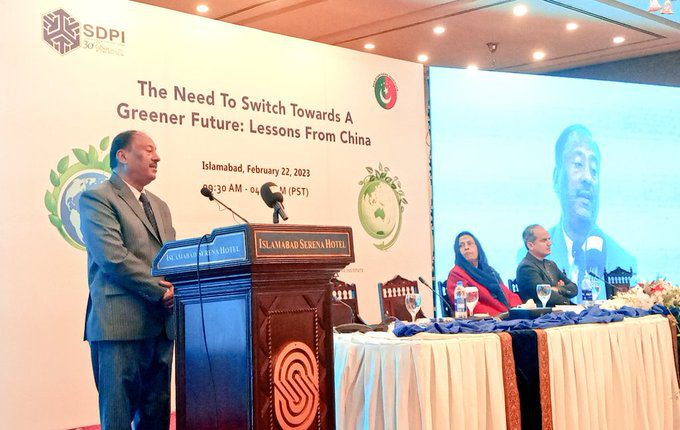Recently a webinar in Pakistan on “The Need to Switch towards a Greener Future: Lessons from China” highlighted discussions by local and international climate experts and policy officials on China emerging as a global leader in renewable energy and green development and its renewable policy model, which could open up more vistas of investment in Pakistan.
In 2015, on the occasion of COP, President Xi, while pledging carbon neutrality, committed that China would emerge as a leader in green development. And today, China is leading the world as a producer and investor in green technology and finance. The shift to green technology has created additional 54 million jobs globally so far, showing the immense multifaceted potential of green development.
Below are the following lessons learned from China as a guide for Pakistan:
- China offers a leadership model from micro to meso-level, in managing resources efficiently and addressing the growing threats of environment and climate change, which Pakistan must learn from and include in its best practices.
- Agriculture and food security were crucial elements of green CPEC as CPEC was not restricted only to trade and energy. By developing renewable energy, Pakistan has enormous potential for green development, and Chinese businesses are also interested in investing in such projects there. However, it requires commitment, cooperation, and appropriate policy-making decisions.
- Green financing needs to be a mainstream economic and financial strategy in Pakistan, given that climate change is now a macro-economic danger rather than an environmental one (as demonstrated by the most recent floods).
- The Pakistan Energy Council underwent its first energy audit resulting in 35% less energy consumed. Hence, it is imperative to continuously conduct such audits to identify unproductive methods and boost energy efficiency.
- Pakistan was the first to receive cash flow from China under BRI’s energy projects aimed at wind and solar energy generation, but it failed to achieve its objective. Hence, it should be a top priority as every penny spent on renewable energy technology guarantees long-term energy and economic security for Pakistan.
- For the first time, new laws for investors in Special Economic Zones (SEZs) have been introduced in Pakistan to simplify the legal and regulatory environment, which would build a strong business case for attracting investments. Shenzhen in China emerged as the most successful model of SEZs, due to its strategic location in proximity to other business clusters, so Pakistan should follow suit and similarly explore this avenue.
- Renewable energy can be expanded in Pakistan, if its profitable and a return on investment can be ensured. Pakistan should establish a coordinated strategy to increase the market for renewable energy resources and reduce the import bill for energy generation.
- The need for advocacy and outreach to the general public to improve energy efficiency at the household level, emphasizing the financial cost that may be saved by making simple modifications to consumption.
- Since 2022, there’s been a much stronger willingness among Chinese companies to invest abroad in hi-tech sectors, an area with immense potential that Pakistan can avail. Hence there is a need to work with local communities to avoid resistance to development projects and tackle environmental and climate issues collectively.




